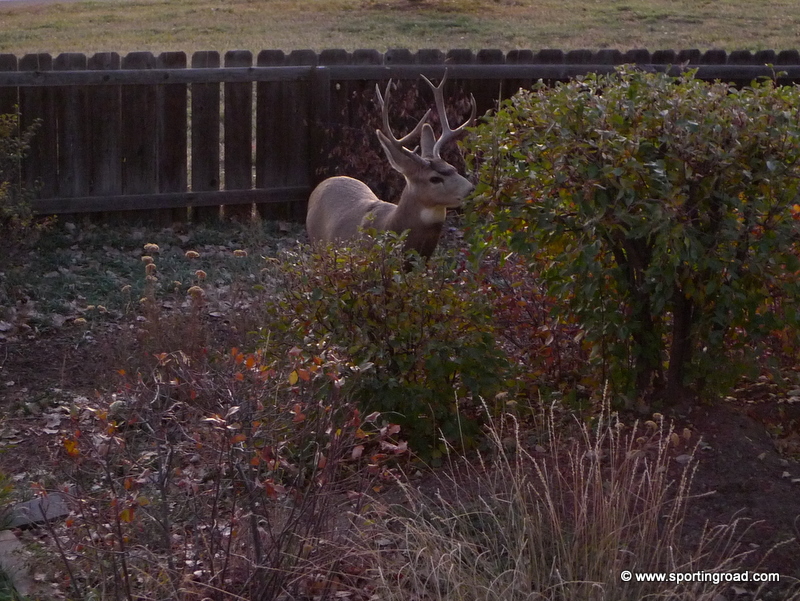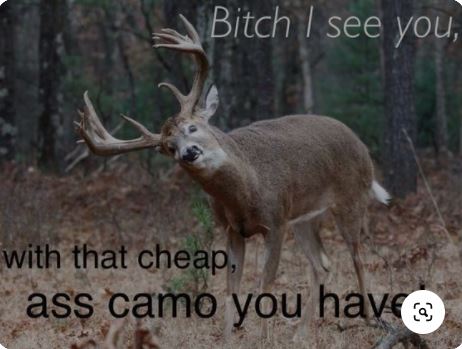
Get One Rifle and Learn to Use It Well
Only 5% of Americans are hunters these days, compared to some 25% after the World Wars, so times are changing and it’s important that hunters respect those changes in order to ensure that our way of life continues, as most people support hunting for food, so long as it is done ethically and humanely—let’s keep it that way for our children. In France, the population of hunters is around 10%, in Alaska 25%, but suffice it to say, hunting is dying.
We like hunting for white-tailed deer, which provides just the right amount of meat for our family, about 50 pounds per year. Antelope provide less, mule deer a bit more, and a bull elk can provide around 175 pounds. The average deer hunter spends $2100 per year in 2022 on their sport. And no hunted animal in the United States provides more food per capita than deer. The deer hunter knows something very basic and original about life on earth. Something that nobody ever invented. And if growing a garden is better for the self in the planet than shopping at the supermarket, then, wouldn’t it be better to avail oneself of foods that grow themselves? What is more truly human than plucking wild fruit or killing a wild animal?
Hunters love to focus on buying the latest and greatest gear instead of spending time on physical fitness, shooting skills, and learning to use what you have available and just simply following my former father-in-law’s advice, “Get one rifle my boy, and learn how to use it.” Don’t forget that our forebears probably killed a lot more game than we ever did with very rudimentary gear. Learn to properly care for your animal and practice a lot with your weapon of choice. Forget about collecting the latest and greatest deer calls and stick to one thing that works and learn how to use it well.
Deer hunters take the subject of rifles so seriously that arguments can go to blows over what caliber of rifle is best. I tended to gravitate to the logic of Jack O’Connor, who shot more game than any of the modern day television hunting show hosts will ever do, mostly with his .270.
Steven Rinella agrees and writes, “Properly tuned and outfitted, and with a disciplined and well-practiced shooter, a high-caliber bolt-action rifle topped with a variable-power scope can meet 95% of the big game hunting challenges that this continent has to offer. For maximum versatility and ease of finding ammunition, stick to common, time-proven big-game calibers such as .270, 7mm Rem Mag, 30-06, .308 Winchester, and 300 Win Mag, plus the short magnum versions of these same calibers.” One of his favorites is a Weaver Custom Rifle built on a Winchester Model 70 action and chambered in .270 WSM, with a Vortex HS LR 4-16×50 rifle scope, handmade sling with neoprene shoulder pad and braided paracord strap, neoprene Vortex Scope Cover, Heavy-duty Harris Bipod, .270 WSM cartridges loaded with Barnes 129-grain LRX bullet, muzzle cover with a piece or tape or, better, a heavy-duty small-size latex finger cot, and a Solo Hunter Gun Cover to keep your firearm protected from snow and mud while in the field and still allows for immediate access. He writes, “the good news is that the average hunter can pretty much do it all with a single rifle. As fun as it might be, it’s really not necessary to get caught up in the minutiae of ballistics or the allure of wildcat or ultra-magnum calibers.” In short, he feels that the .300 Win Mag is capable of ethically killing just about every North American big game animal that he’s likely to encounter.
Jack O’Connor liked using two guns to cover everything, the .270WSM and the 30-06 or 7mm Mag, so that is what I went with, but my daughter is going the .300 blackout (ultralight) direction and we will have to see what she adds on the other end of the spectrum such as a 30-06, 7mm Mag, or .300 Win Mag. for those 300 yard plus shots on big game.
I went the .270 Sako Finnbear and 7mm Mag direction, but I am regretting the Ruger 7mm Mag with carbon stock as the recoil is difficult to enjoy shooting it much. I ordered a new butstock, we will see how that goes. For ballistic comparisons, see the following articles, which explain why shooting to 400 yards on elk, the 7mm Rem Mag may be a better option than the .270 Win:
https://www.ballisticstudies.com/Knowledgebase/.270+Winchester.html
https://www.ballisticstudies.com/Knowledgebase/7mm+Remington+Magnum.html
Our daughter went in a slightly different direction, as at 11 years old and at her first year of deer hunting, she was too young to choose one rifle for the rest of her life, so she opted for the lightweight AR platform in a .300 Blackout by S&W M&P and coupled with the Barnes VOR-TX Ammunition 300 AAC Blackout 110 Grain TAC-TX Polymer Tipped Spitzer Flat Base Lead-Free bullet, this is a super set up for white-tailed deer. It is excellent in that round and with a 123 Grain practice round, it’s fun to shoot. It can be decked out with accessories. Some of our other friends have advocated for 6.5 creedmoor with suppressor, but that is overkills for our purposes thus far with my daughter’s hunting.
Scent Control is Serious Business
Our daughter hunts whitetails with her uncle and Jimmy takes scent control seriously. He recommends washing each morning with unscented soap and shampoo, use scent eliminating sprays, and be cautious of the direction of the wind. Keep hunting clothing in a scent proof bag or tote and store outside if possible, and use Earth Scent in hides. He likes two soft grunts every 30 minutes max. He is right to feel that way because deer have 300 million olfactory glands, compared to just 5 million for humans—-deer can smell better than the best bloodhounds, as they have only 220 million. He likes Down Wind, or whatever is on sale at Walmart to cover his scent after the rituals above. He is able to sit still for very long periods, as deer don’t see well, except movement, and he is keen avoid any movement while the deer is looking in your direction. He likes two soft grunts on the Primos Revolver deer call, spaced about 5 seconds apart and then put it away for at least 30 minutes. Occasionally he might consider rattling antlers to lure in a buck but he does it very rarely, as well as a rabbit in distress call, which sounds similar to a fawn bleat and is as likely to bring in a coyote as it is a doe. And, after shooting a deer, Jimmy’s rule is to wait at least 20 minutes before going to look for it. White tailed deer may seem elusive, secretive but there is a reason, they live on the boundaries, the borderlands, making a place for themselves in the places between worlds. The spaces between the wilderness and the man made, where farms meet the forest, and the backyards meet the backwoods, as one show entitled The Secret Lives of Deer said it so well. A century ago, there were 1 million deer in North America and today there are some 30 million. Deer are corpuscular and are adapted to feeding the early and late hours of the day, which is when they are most active. During the day, they will often bed down and chew their cud.
It’s always interesting to watch the TV shows with whitetail hunting in other places where they use Big & J or Big Tine deer attractant feeds for purposes of attracting deer to their stand areas, but baiting deer is illegal in the states where we hunt. So scent reduction is very important, as you don’t have a lot of other cover scents or bait to hide what is going on.
Tips on Taxidermy
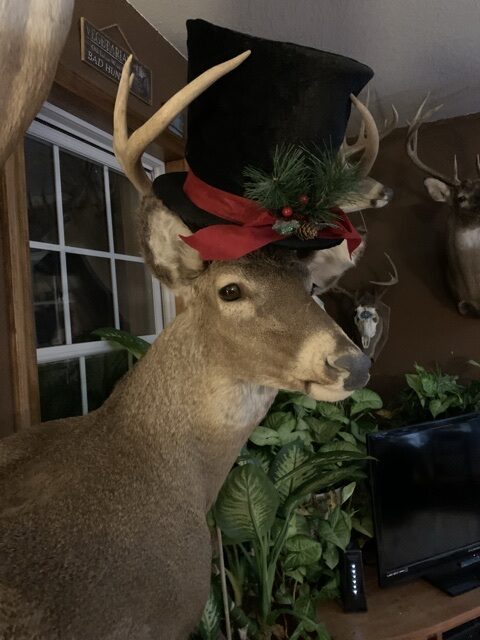
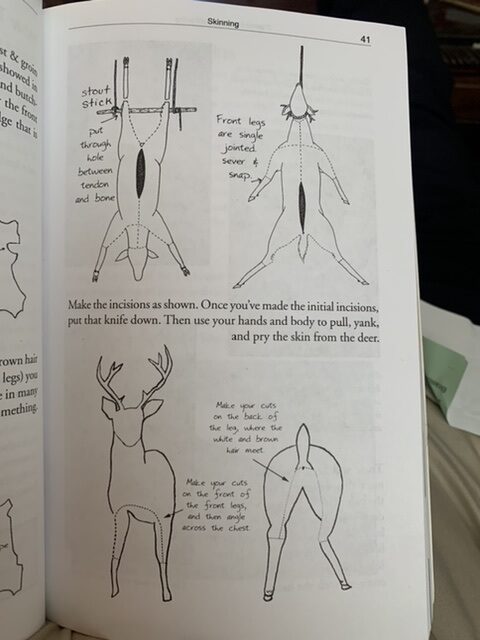
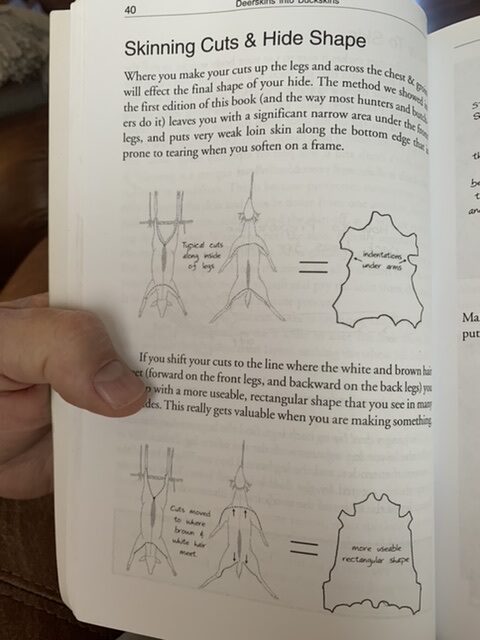
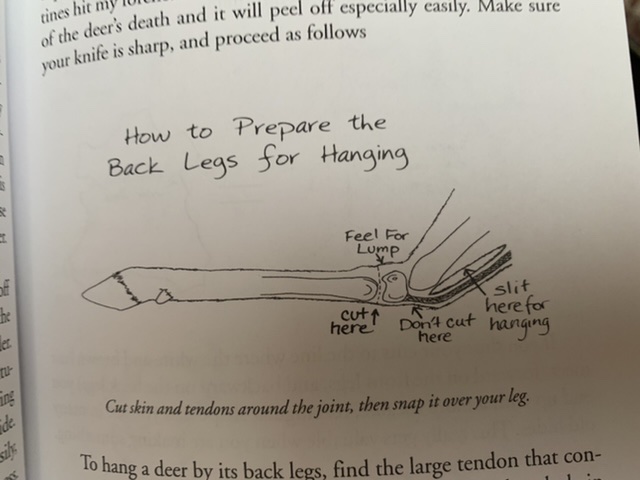
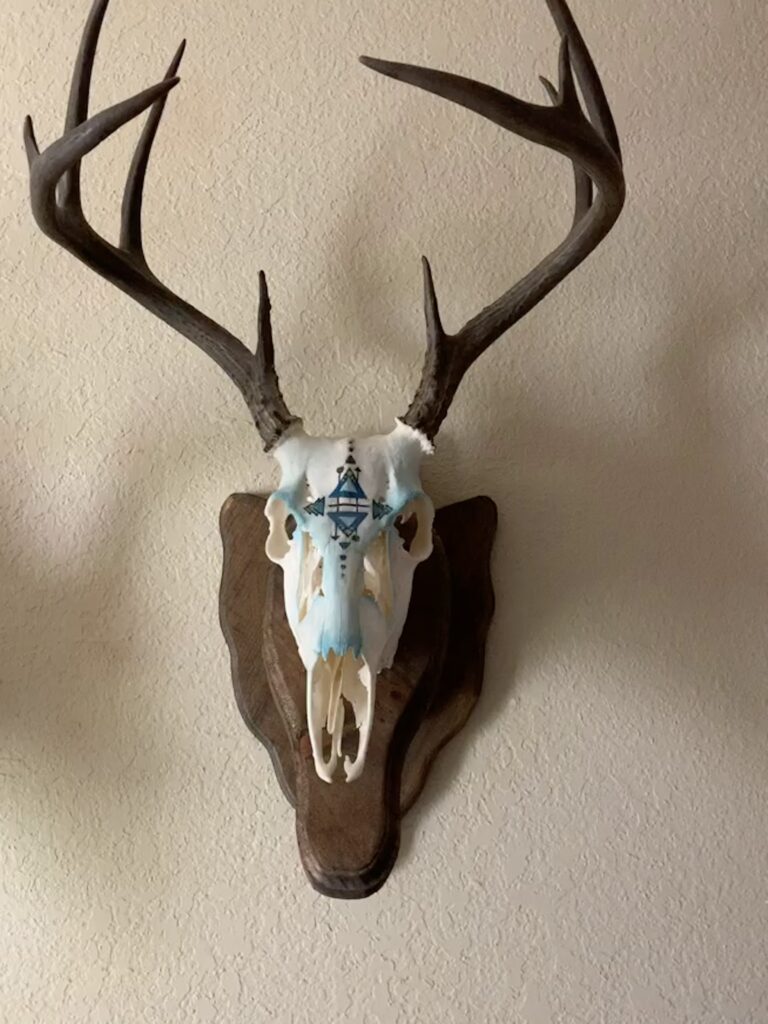




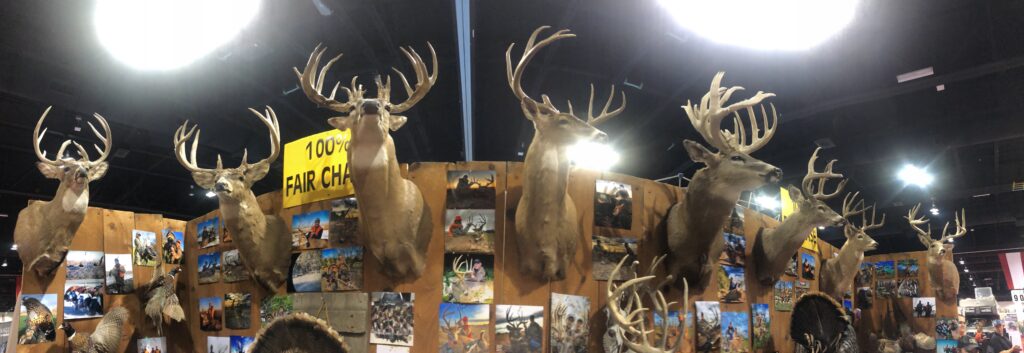
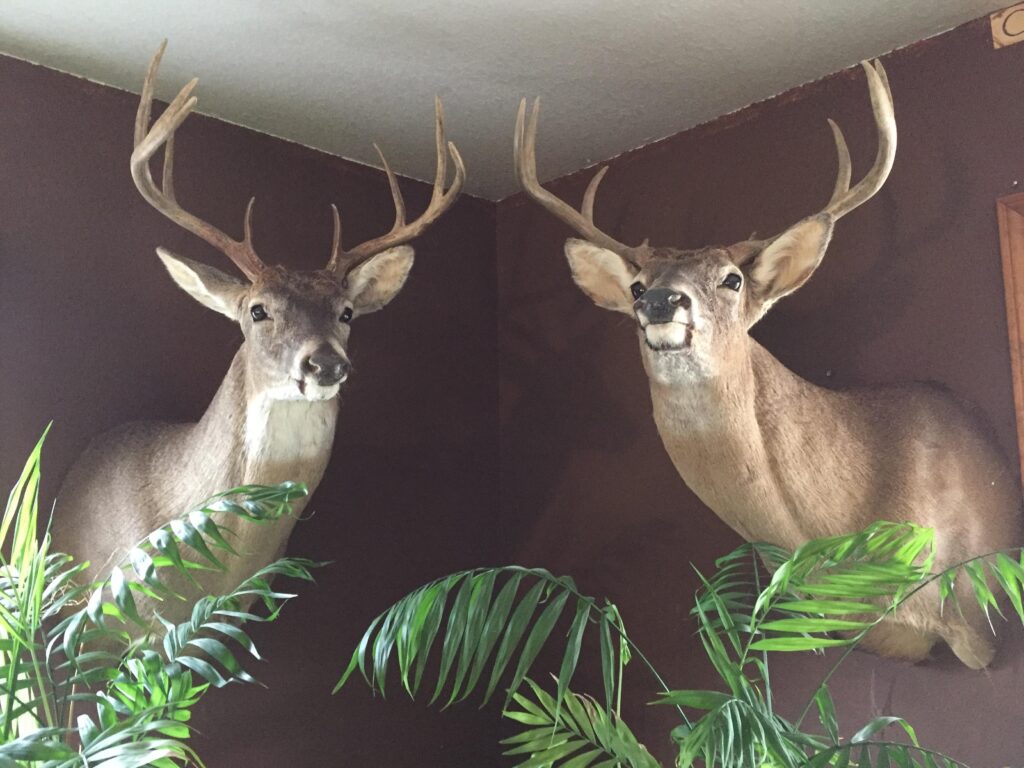
Blind Calling
Even during the rut, when bucks should move all day, you have to think about the timing of your blind calling sessions. Deer are crepuscular, which means they move most in low light. This also means that if a buck is going to bump into a rival and throw down, the most likely time for this to happen is, you guessed it—low light.
A rattling sequence at first light has higher odds of eliciting a response than a noontime antler clashing session. The same goes for creating a series of tending grunts and doe bleats. When the deer are most likely to be moving, and most likely to run into other deer, is when you want to blind call.
There are other situations that greatly increase your odds of shouting into the void and getting an answer. When a rain shower moves through, or when a front passes and the wind dies down, are two good opportunities. A sudden temperature drop as an arctic blast works its way into your area is another. Anything that should get deer moving is potentially worth a blind calling attempt. Just remember, even if the conditions are ripe for it, not all calling sessions are created equal.
Navajo Traditions for Deer Hunting
We have picked up a some traditions from our Navajo friends, which we quite like, so we have added them to traditions of our own.
“Hunting is sacred, so hunters must treat deer with respect. Wild animals communicate in a sacred way. Once a hunter has killed a deer, he has to release its spirit back to its owners (Talking God and Black God), so that it can form into another deer.” –Navajo saying
The deer or bįįh as the Dine people pronounce it in their language, have a light side and a dark side. The light side provides us with food and many things. But their spirit can have a dark side as well, so it is important to treat every deer with respect.
The skin of the deer is not to be brought back directly home. The fur and remains are to stay away from the homestead. It’s said that if sheep come across and walk within the deer remains, the sheep lose their mind and become wild. It can also affect the human mind.
Even down to the gender of the deer can be a message if one crosses your path. Female being a bad sign. Male being a positive sign.
At a young age, I remember being told that if there’s ever a time you see herds of deer in a place where it’s not supposed to be, then it’s a sign that something catastrophic will happen.
However, the Navajo people do utilize the deer in a good way as well. Just the deer hide alone. It’s used in ceremonies for patients to sit on, sometimes it’s worn, it can also be cut to make bags or used to tie a young girls hair during her kinaalda.
Nature. Everything has its place and every animal has its legends. Grandfather especially taught us about the deer: its habits, its tendencies. He told us to respect the deer. Hunting is a sacred act with strict do’s and don’ts. For example, we are instructed not to cut our hair during hunting season and we need to stay focused on hunting. If our minds wander to fishing or other matters, our trip might not be successful. Grandfather also told us to sit down while we eat. Standing up while eating could spook the deer, so we always sit for meals.
We practice shooting year around, getting target practice with our rifles and our bows and arrows as often as we can. The day of the hunt is always prayerful. We bless the day and ask for a good outcome. We are not always successful, but Grandfather’s lessons were most important on the days we had patience and shot the deer.
Right when we kill a deer, we gather pine branches and make a bed for the deer. The pine needle bed lifts the dead deer off the ground and offers his spirit respect. It also keeps the hide and meat clean from dirt and other debris. We face the head of the deer towards home, which protects it. Once in position on its bed, we start gutting the deer. We carefully cut out the stomach and the intestines. We unwind the intestines and place them on the tree branches and bushes off the ground. By doing so, we are sharing our kill with other predators, such as bears and coyotes. Then we cut out the liver and place it in a bag full of flour to take home and eat.
After the deer has been gutted, we haul the carcass to our home, where we hang it out to dry in a tree that is close to the house, but far enough away to keep it from the domestic animals. In Navajo tradition, deer meat can only be fed to animals which hunt food for themselves: dogs and cats don’t count. The venison ages and dries while it hangs. We leave it out to age on the trees for about three days. After that time, we take the meat down and skin it.
We gather pine needles again and place them on the ground for the skinning process. With the meat on the needles, we begin to skin the meat from the hide, which takes about an hour, depending on how good we are at that skill. A well-skinned hide should have everything still in tact, including the deer’s head and the tail.
With the skin separated, we cover the meat with the hide and the antlers. We cut the meat off the main body of the deer and place the pieces on the hide. We want the meat to be dust free. While we are dressing the deer we follow the Navajo traditions, say prayers, and work quickly and quietly to be respectful of the deer, the land, and nature. Nothing should be wasted.
After all the meat is cut from the skeleton and sliced into chunks, it is placed in the hide and we take it inside. Then the venison is prepped for cooking or placed in a freezer for eating later in the winter.
We always give away deer meat to our relatives and friends, and they do the same for us. Last year we tagged three deer and I gave some venison to my math teacher. He said he used to hunt but can’t move around very well any more. He appreciated the gift and said he missed deer meat so much.

Tips on Butchering
Jimmy believes there are several keys to this. First, gutting and skinning quickly, removing the scent glands on bucks. Have a hacksaw and an axe available for splitting the deer along the spine and removing the legs. Second, hanging in a refrigerated meat locker for 3-7 days. Third, freezing the cuts of meat for an hour before cutting and grinding. Remove all fat, badly shot or bloody places, and the lymph nodes. Fourth, wrapping in Saran wrap and butcher paper before freezing.
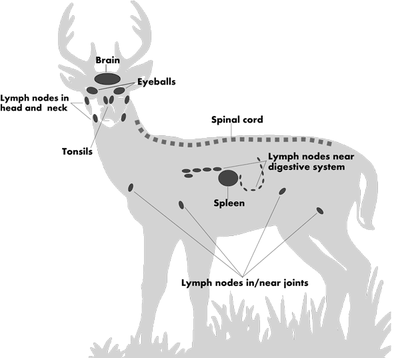
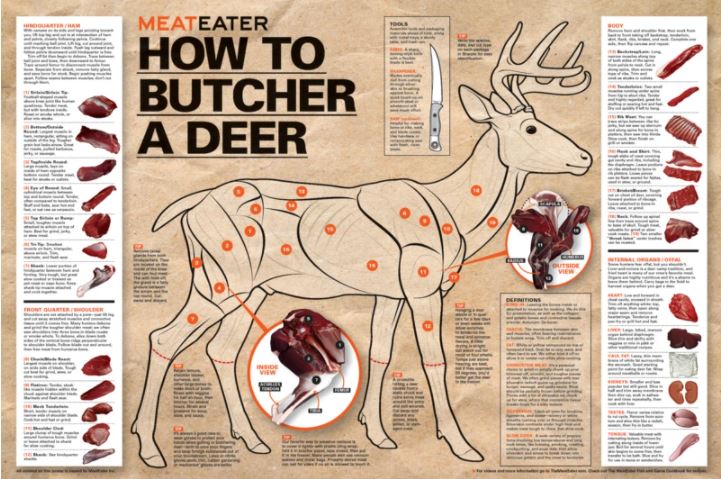
Jimmy has quite the setup of a hydraulic lift for gutting, commercial walk-in freezer which allows us to cold age the deer for 5 days before packing, grinding, wrapping and freezing.
We have since learned some tricks from our friend and former butcher, Henry. He likes Victorinox boning knives, same as my uncles did who were former butchers. He uses a small knife for skinning and then the boning knife, sharpening steel and meat hook for the rest. We use a Wesson .75hp meat grinder. Here is the instruction manual for the grinder.
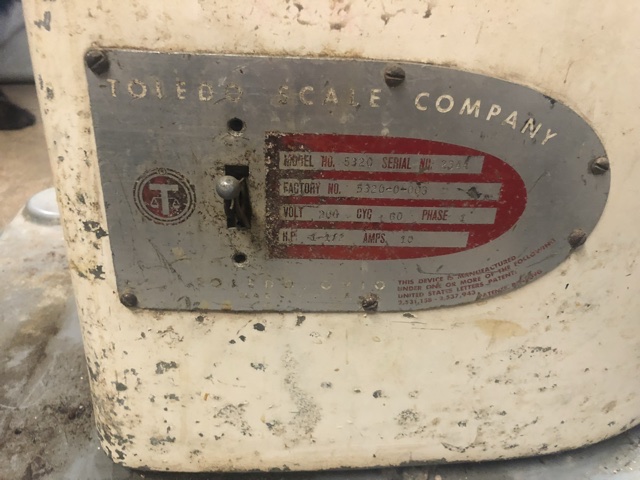
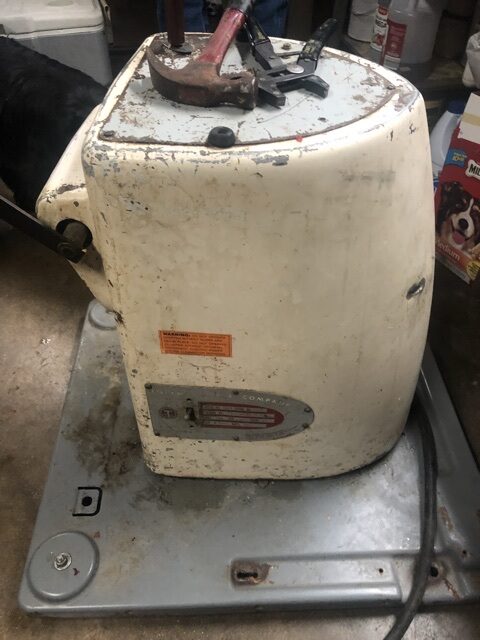
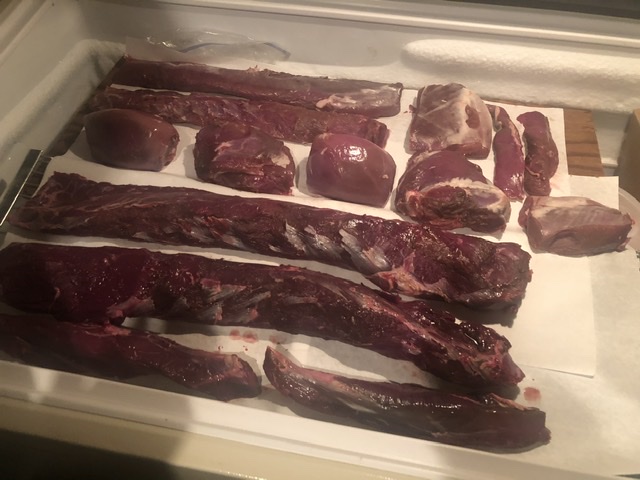
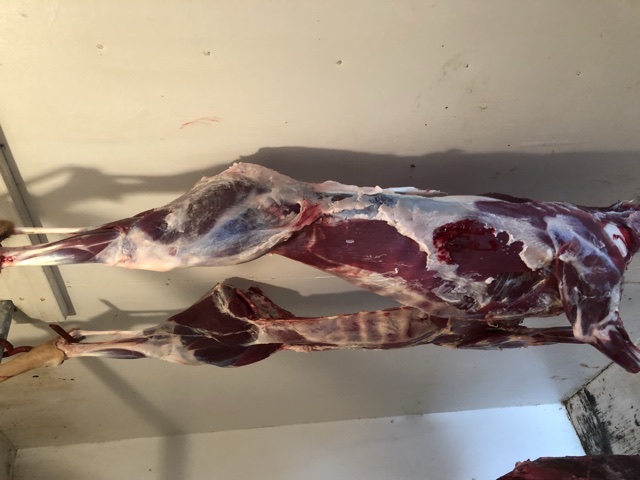
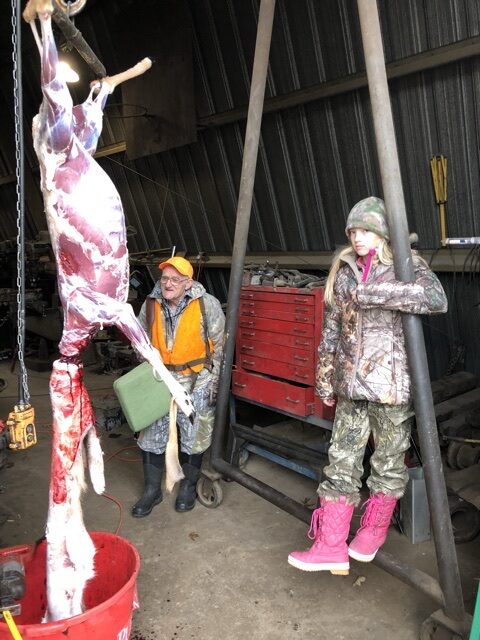
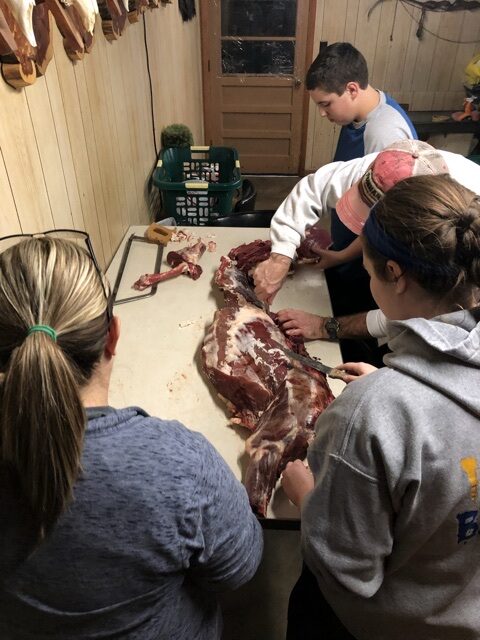
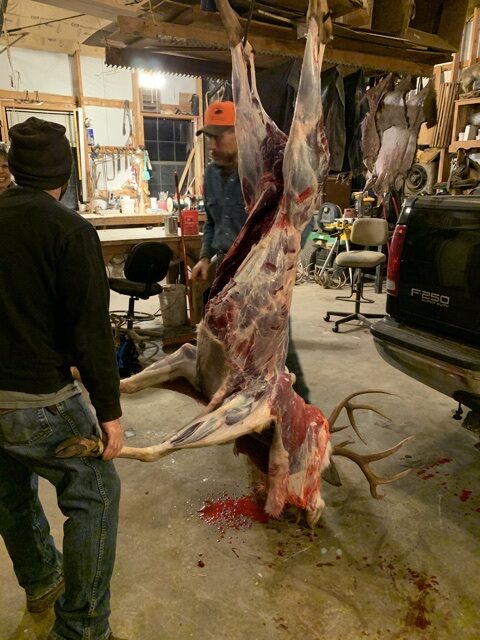
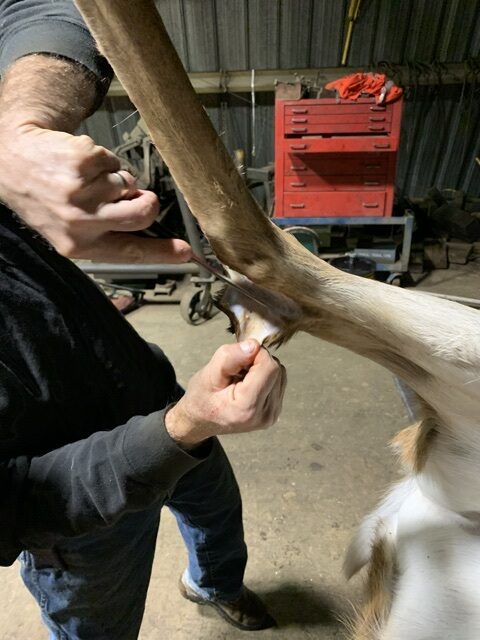
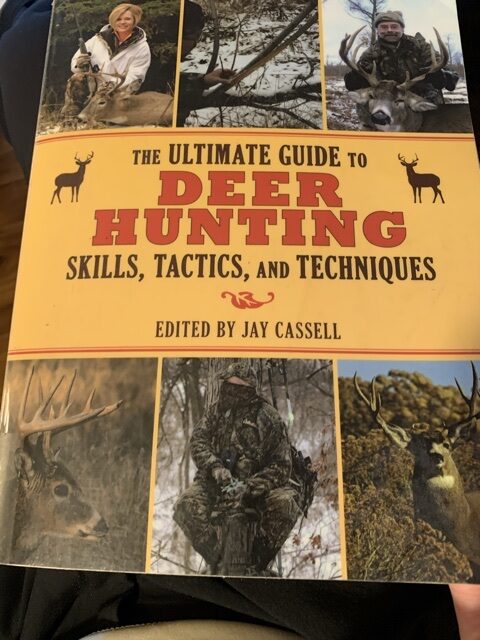
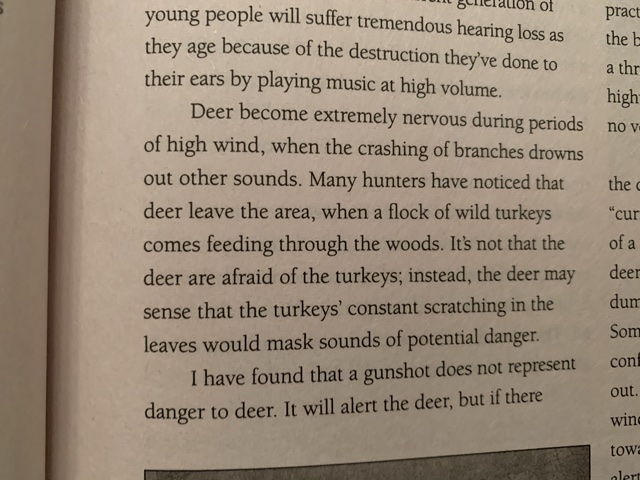
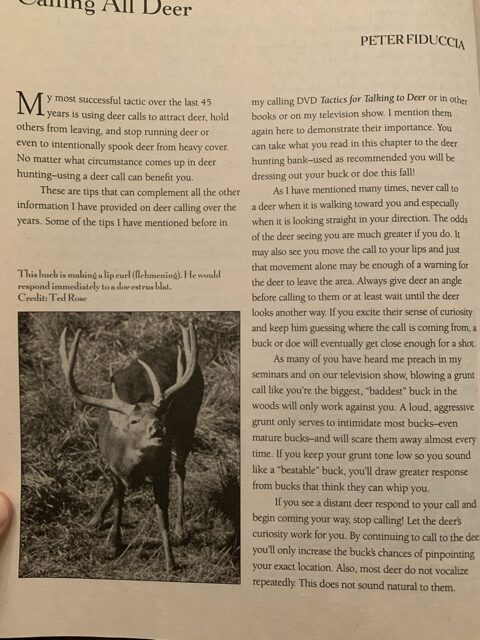
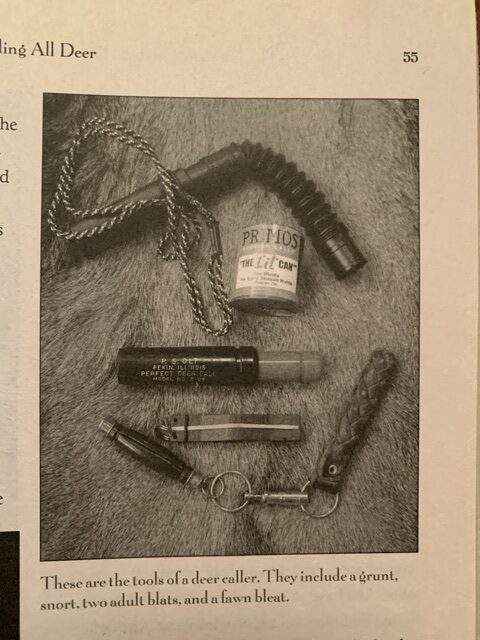
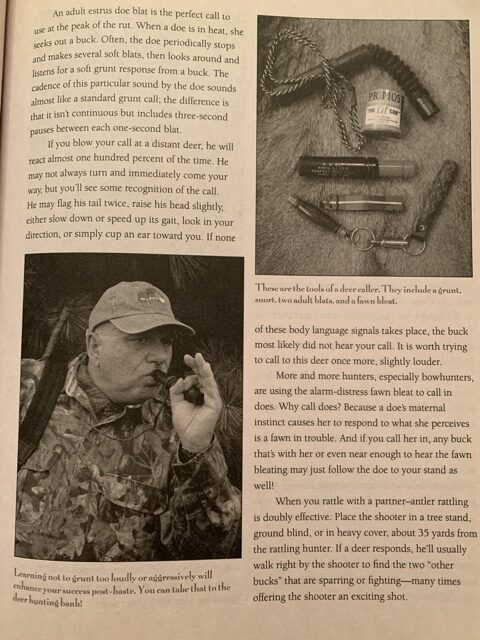
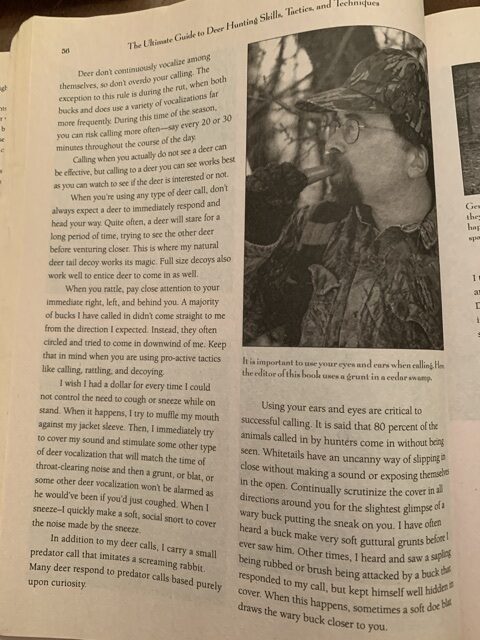
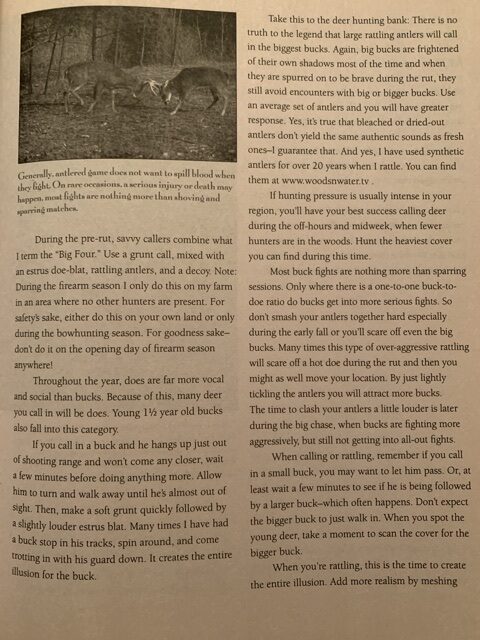
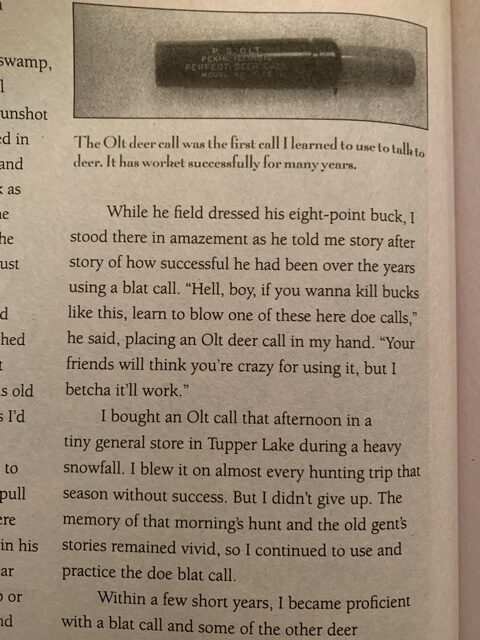
Calling and Rattling
https://www.youtube.com/watch?v=YpaKaGtLkHM
https://www.youtube.com/watch?v=61jvamCR9Rs
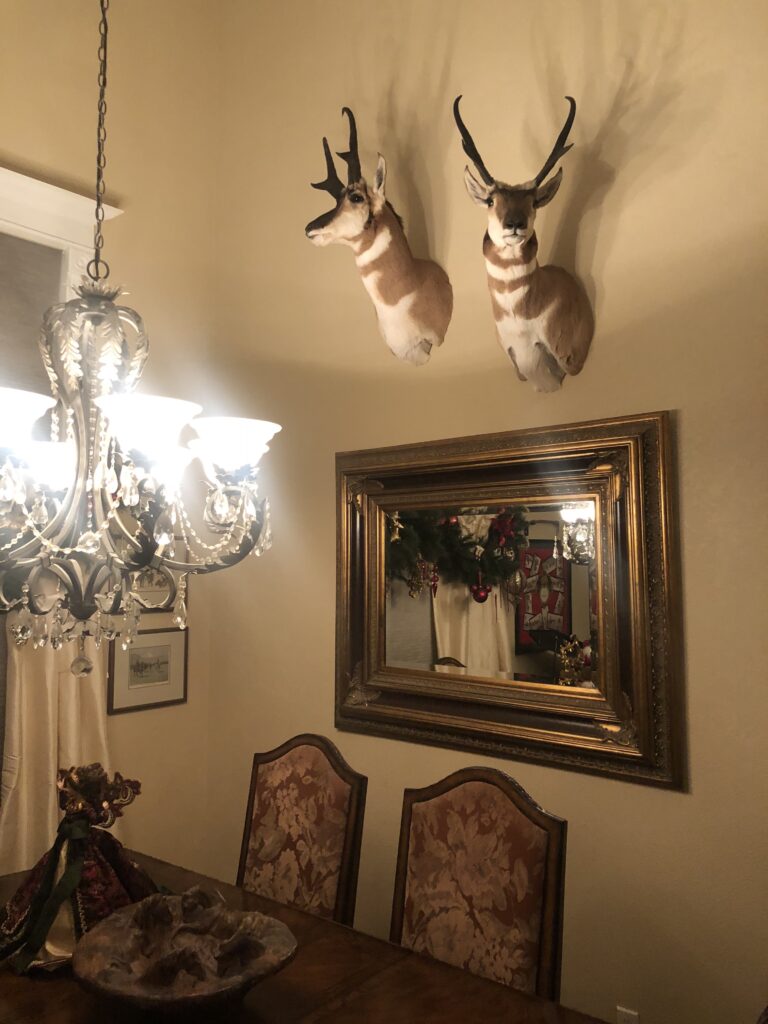
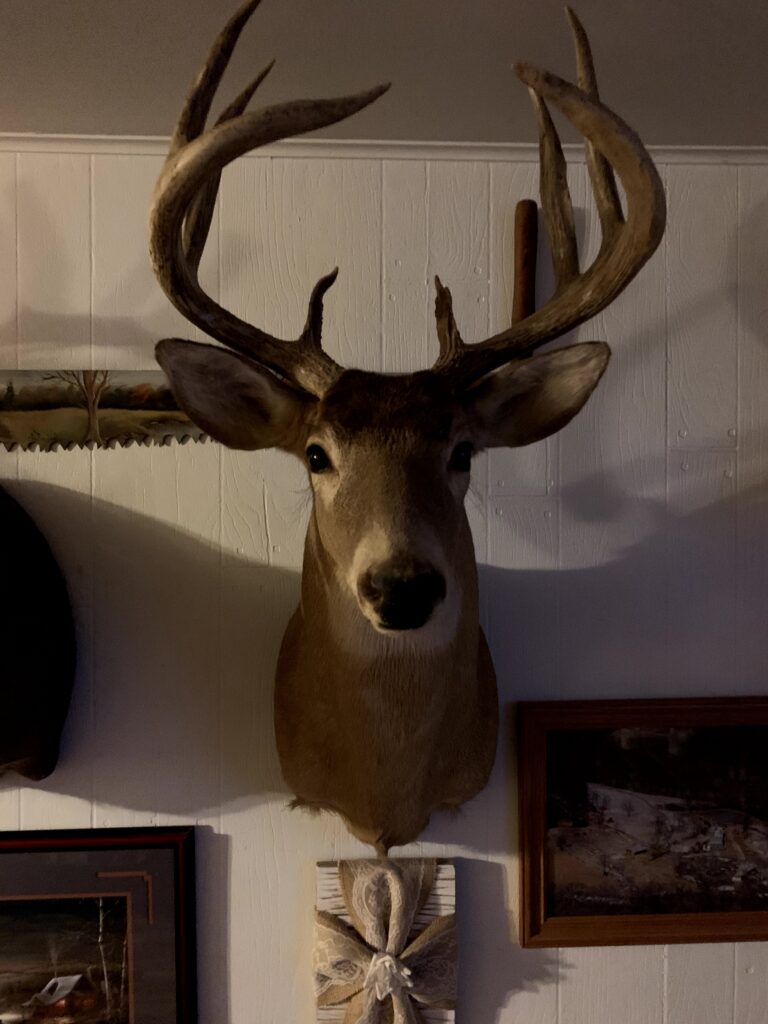
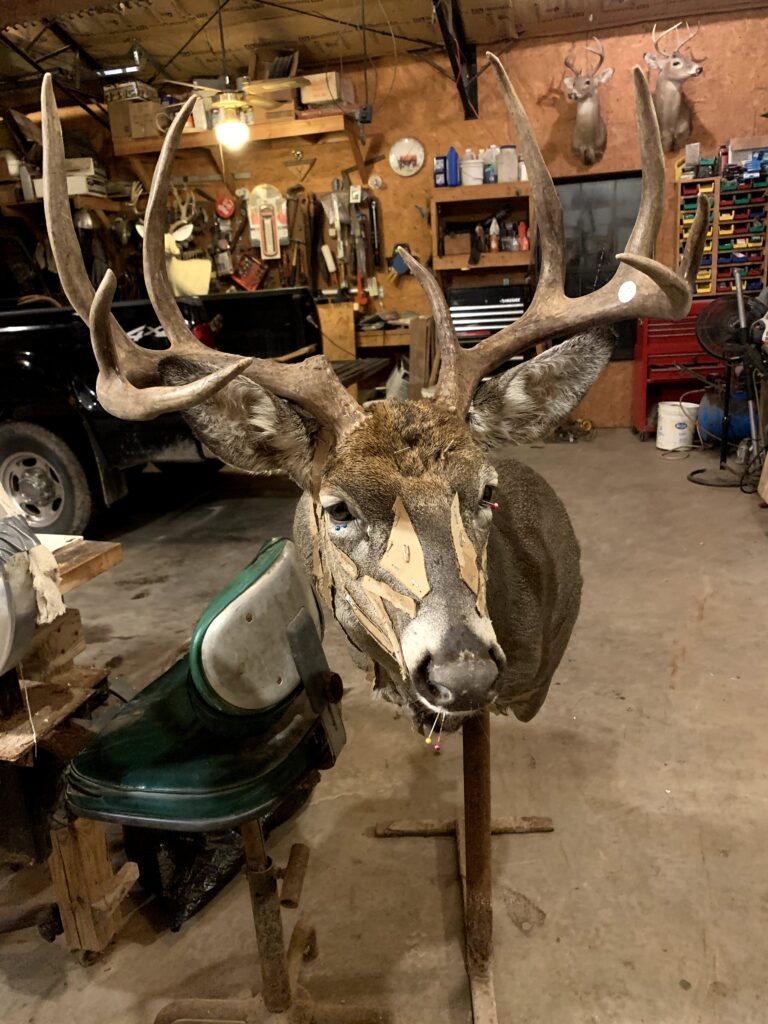
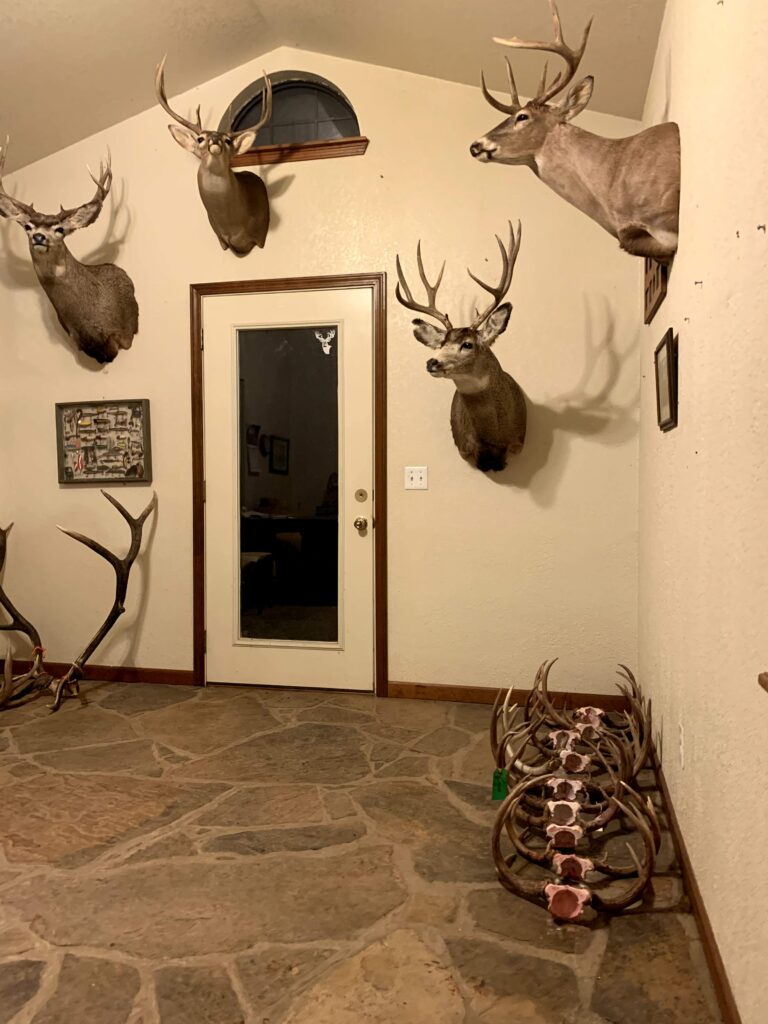
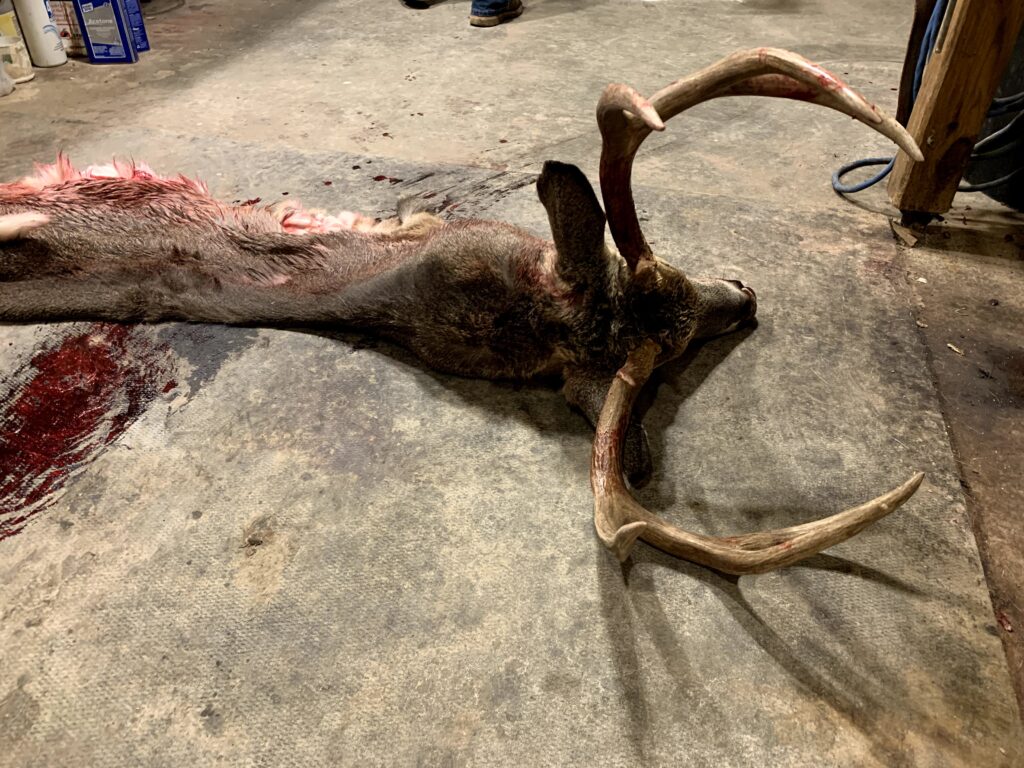
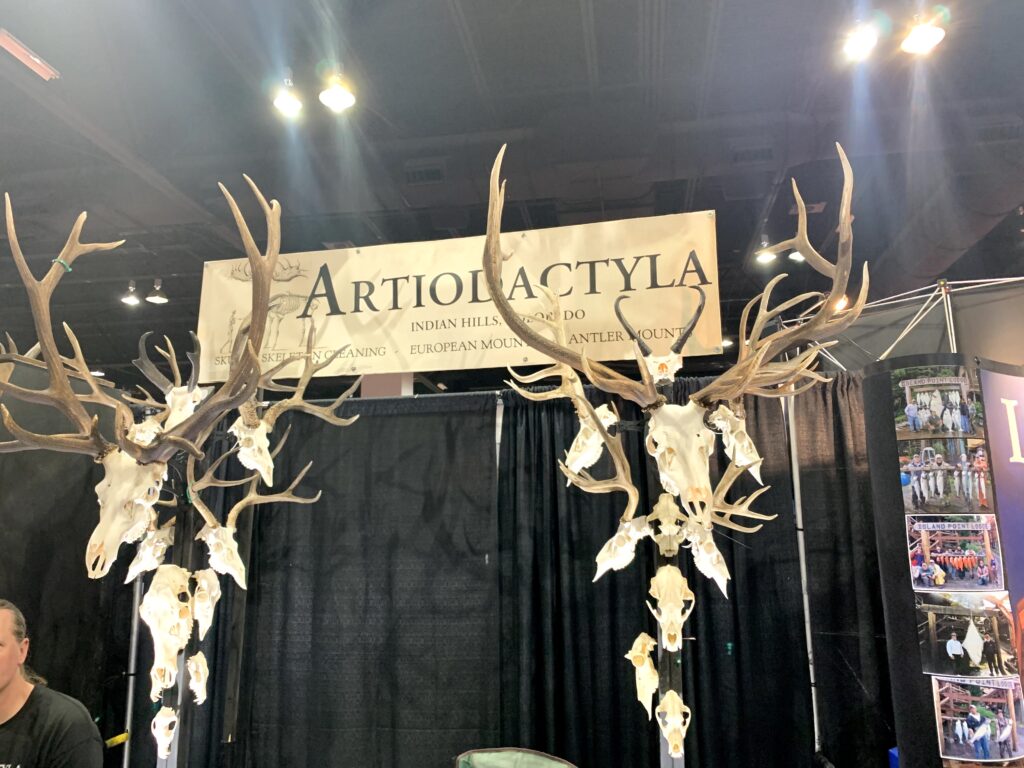
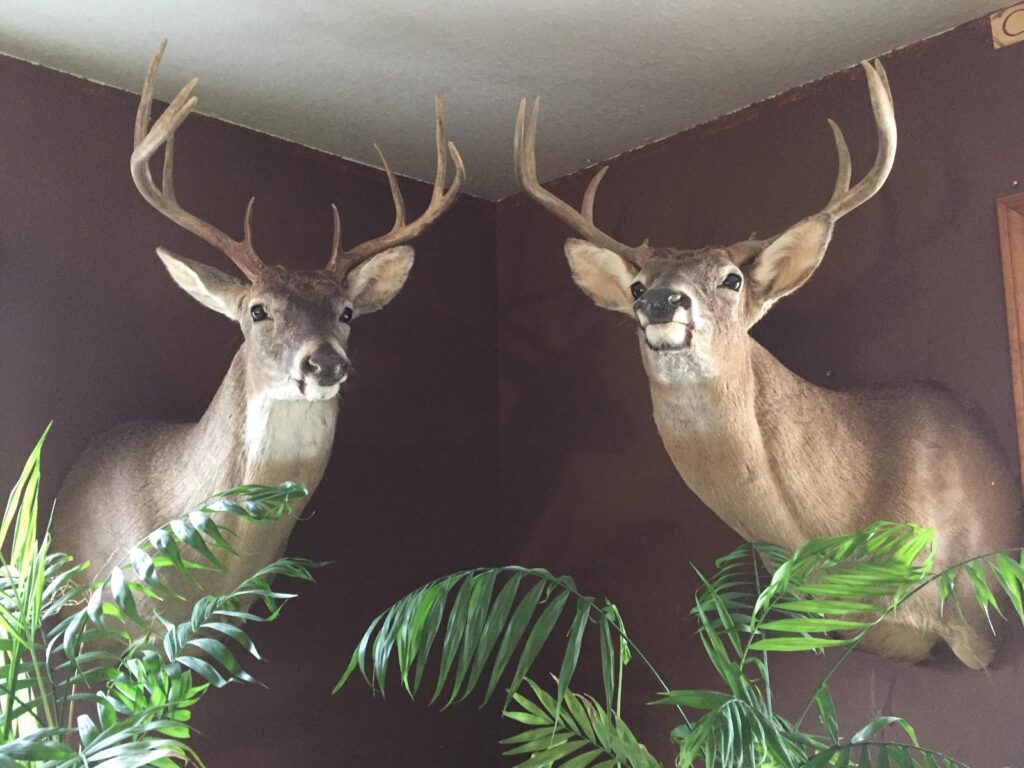
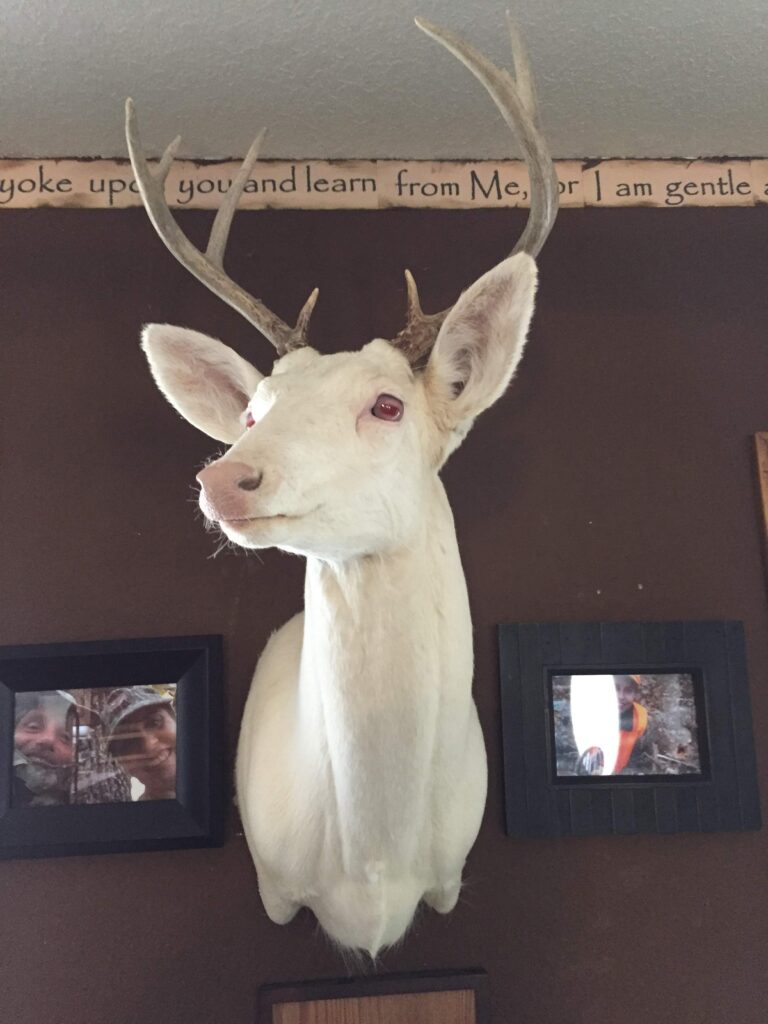






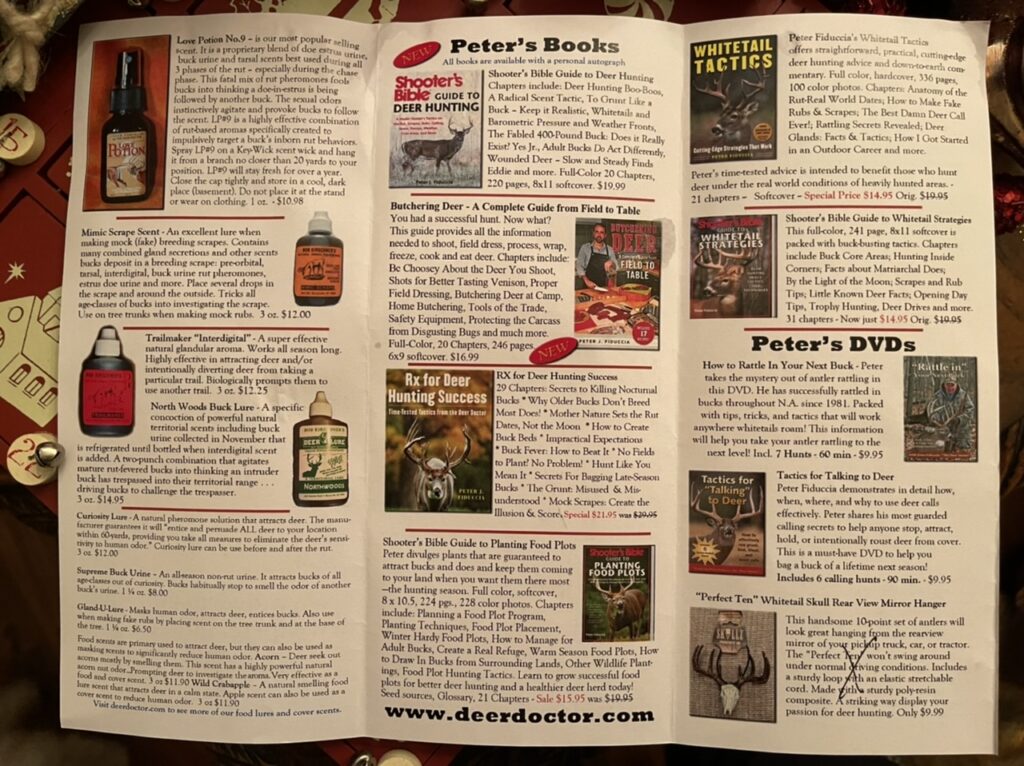
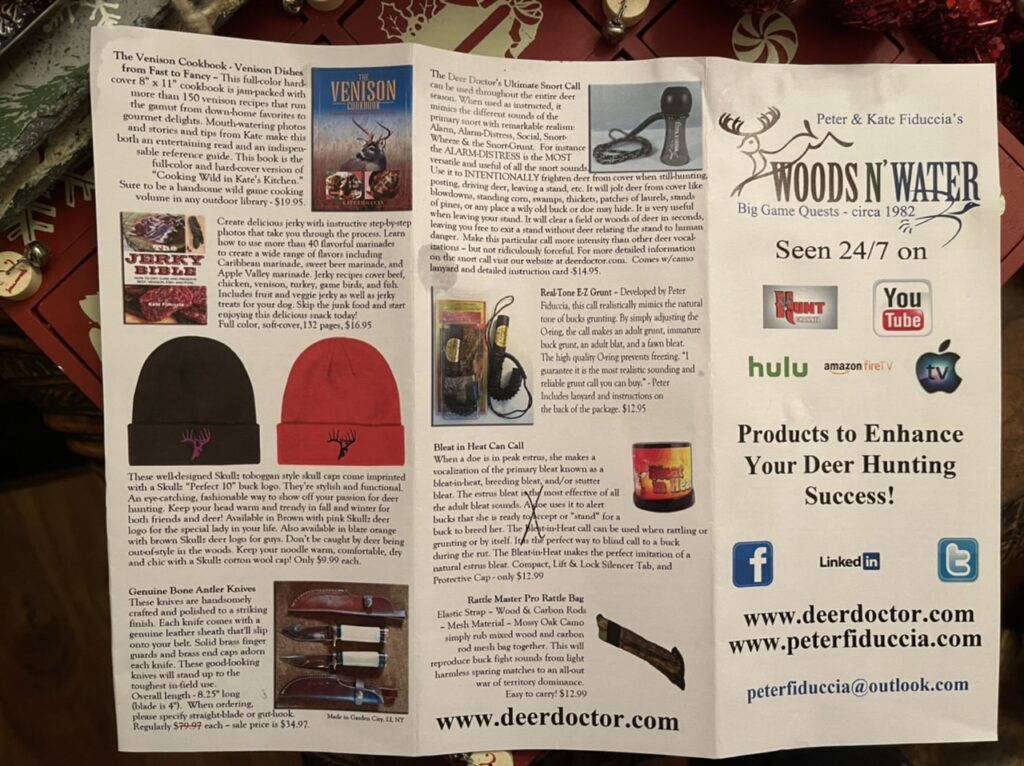
Lymph node removal for chronic wasting disease, which isn’t a problem yet where we hunt in Missouri, but it’s spreading everywhere fast
What to do with deer ribs/flap meat—stuffed venison flank with bacon from MeatEater
https://www.texasmonthly.com/eat-my-words/stuffed-venison-flank-from-jesse-griffiths-afield/
from Afield. Stuffed Venison Flank The flank—a misunderstood throwaway cut— can be transformed through long, slow cooking. Stuffing this sinewy, tough cut with fatty sausage keeps it moist, while the bread crumbs and egg set the stuffing and make it sliceable. Try this recipe with different sausages in the stuffing—we’ve had success with wild boar chorizo, kielbasa, and a simple garlic sausage. The acid from the tomatoes and wine tenderizes the braise, creating a rich sauce that calls for mashed potatoes, polenta, or pasta. Try making this a day ahead and reheating it slowly. 1 boneless venison flank, about 2 to 3 pounds, (page 164) Kosher salt and freshly ground black pepper 1 pound ground pork or sausage 2 tablespoons chopped fresh sage or parsley 1 cup fresh bread crumbs 2 eggs, beaten 4 tablespoons olive oil 2 onions, thinly sliced 2 cups carrots, thickly sliced 4 garlic cloves, sliced One 28-ounce can crushed tomatoes 1 cup red or white wine Venison stock (page 173), chicken stock, or water, as needed 1/2 cup chopped fresh parsley Serves 8 1. Preheat the oven to 350°F. Season the flank with salt and pepper. 2. In a small bowl, mix the ground pork, sage, bread crumbs, and eggs. Season with salt and pepper; omit the seasoning if using bulk sausage. 3. Lay the flank in front of you with the grain running across, from side to side. Spread the pork mixture across the center of the flank, roll the flank around the stuffing, then tie with kitchen twine every 2 inches. 4. In a large Dutch oven or braising pot, heat the olive oil over medium-high heat and brown the stuffed flank on all sides, about 15 minutes total. Transfer the flank to a plate. 5. Add the onions, carrots, and garlic to the pan and cook over medium-high heat until softened, about 5 minutes. Add the tomatoes and wine and cook until reduced by half, about 10 minutes. Return the flank to the pot, spoon some sauce over it, and add enough stock or water to cover the meat halfway. 6. Cover the pot, bring to a boil, then place the pot in the oven. Braise, turning the flank every 30 minutes, until tender, 4 to 5 hours, adding more stock, if necessary, to keep the flank half covered. 7. Taste the finished sauce and adjust seasoning with salt and pepper. Let the flank rest for 5 minutes, cut away the twine, and slice thickly against the grain. Garnish with the chopped parsley. To see more recipes like the Stuffed Venison Flank, purchase Griffiths’ book here.
_____
For butchering in Missouri we use:
A hoist, axe and hammer, a good skinning knife
A walk in cooler or other cold garage type place to hang for 3-5 days
A meat grinder, slicer, and good boning knives
A sturdy plastic table, deep washing sinks, Scotch painter’s tape, waxed butcher paper and saran wrap
If you don’t have all or most of that, best to gut and quarter your game and take in game bags to a professional processor, such as http://stevesmeatmarket.net/

